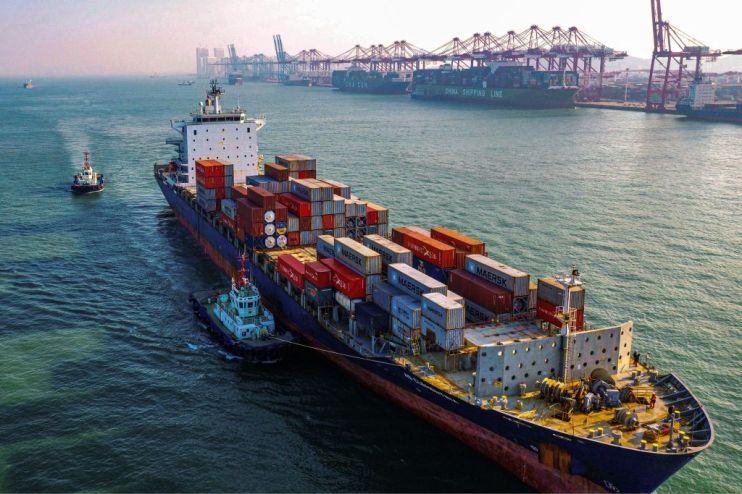Demand picture for shipping ‘far worse than we had foreseen,’ analysts warn

The demand picture for container shipping is “far worse” than predicted, analysts have warned, as the sector struggles with an oversupply of vessels ordered during the pandemic-era shipping boom.
“There’s a really, really punishing demand environment and at the same time, they’re just not doing enough to reduce the amount of available capacity in the market,” Simon Heaney, senior manager at the maritime research consultancy Drewry, told City A.M.
He added: “The demand picture is far worse than even we had predicted with some really awful trade stats in terms of double digit losses on key trades from say Asia to North America, Asia to Europe.”
The container shipping sector went through an astonishing boom after the first wave of coronavirus, as global supply chain disruption and huge import demand for manufactured consumer goods sent freight rates into the stratosphere.
However, as the pandemic-induced bonanza faded, it has faced the problem of a huge oversupply of vessels, ordered on the back of bumper profits and a desire for newer, greener fleets.
Figures from data and analytics firm Clarksons Research show 8.7m TEU – a unit used to measure fleet capacity – has been ordered since 2020, with an an all-time record total of 4.4m TEU in 2021.
By 2025, the containership fleet is expected to be 30 per cent greater than at the start of 2020.
As a result, analysts have forecast tanking freight rates and tumbling profits at major ocean carriers.
“You lose your revenues through lower rates, which are now in many cases below breakeven, you lose money, asset values drop and it eats into the massive pile of cash that you built up over the last few years,” Heaney explained.
In May, Maersk warned of a “radically changed business environment” as its profits plunged, while CEO Vincent Clerc said the shipping giant had a “bumpy” road ahead due to the massive number of ships joining the global fleet. Its rival Hapag-Lloyd also saw profits dive nearly £2bn that month.
In response to the trends, shipping groups have been withdrawing capacity by slowing containership speeds, cancelling voyages and scrapping older vessels.
But Peter Tirschwell, vice president, S&P Global Market Intelligence, warned that this would not “completely mitigate competition among carriers for cargo and market share, which will continue to put pressure on rates as reflected in carrier financials.”
“Overcapacity will define the industry for the next 2-3 years,” he added.
The drive to decarbonise
A push to meet decarbonisation targets has also contributed to oversupply, as companies look to replace older polluting ships by buying newer, cleaner ones.
The International Maritime Organisation has targeted a 70 per cent reduction in the carbon intensity of the global fleet by 2030.
But Tristan Smith, associate professor at UCL and a specialist in the shipping industries’ net-zero push warned that many carriers had purchased containerships that would not meet increasingly stringent post-2030 requirements.
As a result, they could eventually be forced to sell their vessels at a “major devaluation,” Smith told City A.M. “because no one is going to want a five-year old ship that isn’t ready for zero emissions.”
He added: “If you have this backdrop story of a sustained period of low revenues… you end up with a balance sheet in five or six years time, just when you need the capital, that is exhausted.”